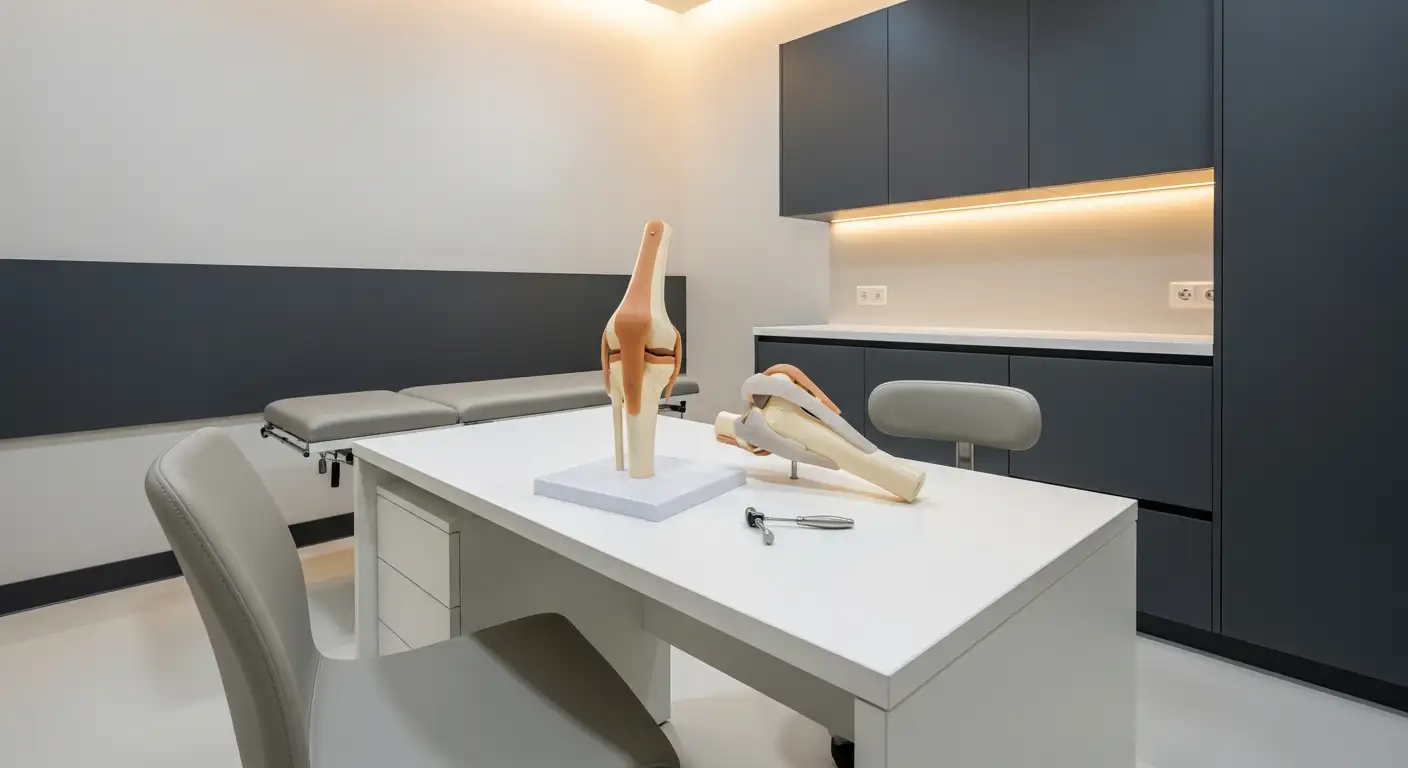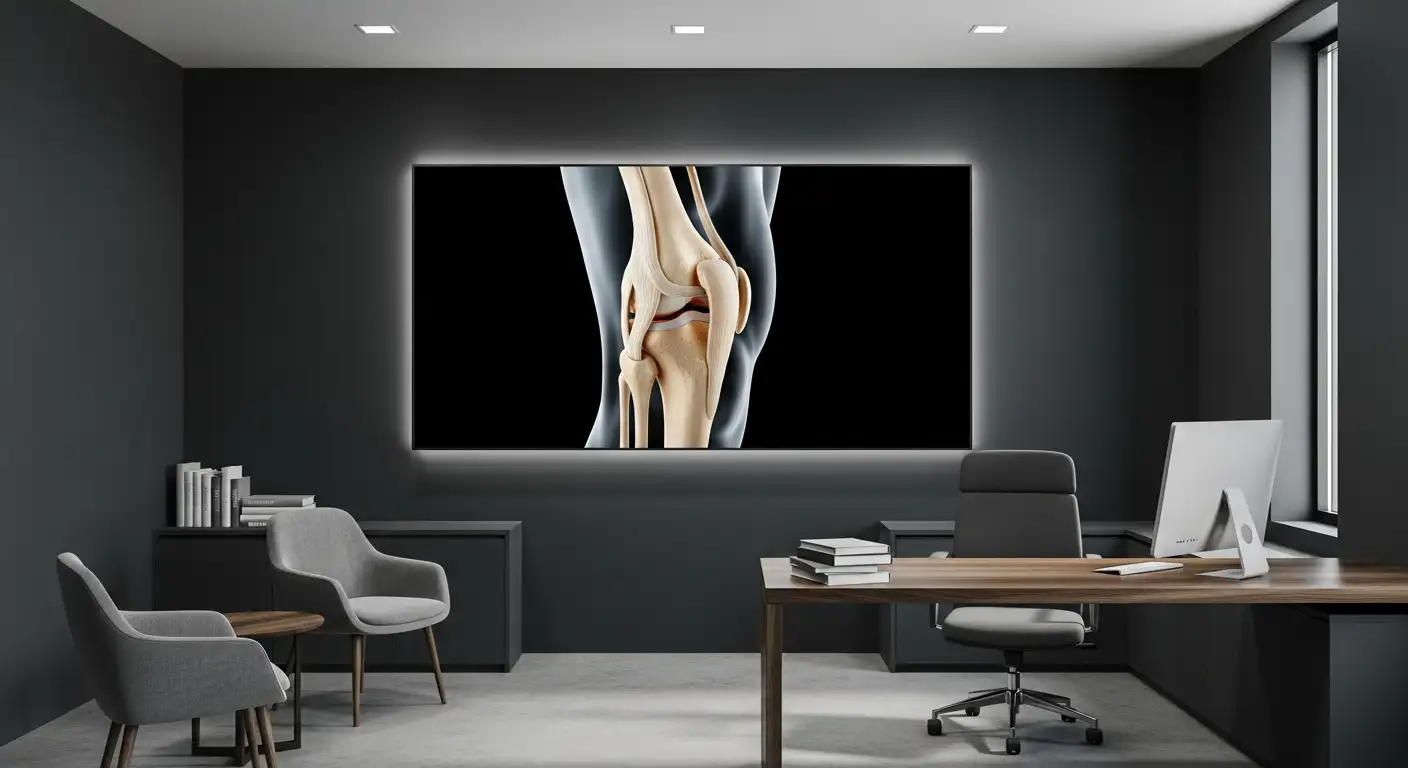Understanding Knee Surgery
Knee surgery is a medical procedure performed to address various knee-related conditions and injuries. It involves surgical intervention to alleviate pain, restore function, and improve the overall quality of life. Understanding the common types of knee surgery and the reasons for undergoing such procedures can provide insight into the importance of reducing knee swelling after surgery.

Common Types of Knee Surgery
There are several common types of knee surgery, each tailored to address specific knee conditions. These procedures include:
Reasons for Knee Surgery
Individuals undergo knee surgery for various reasons, mainly to address conditions that cause pain, limit mobility, and affect daily activities. Some common reasons for knee surgery include:
Understanding the common types of knee surgery and the reasons behind them is essential for individuals undergoing knee surgery. It enables them to make informed decisions, follow post-operative care instructions, and take steps to reduce knee swelling after surgery effectively.
Managing Swelling After Knee Surgery
After undergoing knee surgery, managing swelling is a crucial part of the recovery process. By following these strategies, individuals can effectively reduce knee swelling and promote healing.
Elevating the Leg
Elevating the leg above heart level is a key step in reducing knee swelling after surgery. This can be achieved by lying on your back with a pillow placed under your heel, ensuring that your leg is straight and supported above heart level [1]. Elevating the leg helps to improve circulation and reduce fluid build-up, which can alleviate swelling and discomfort.
Using Ice Packs
Applying ice packs to the affected area can significantly reduce knee swelling after surgery. It is recommended to wrap the ice pack in a thin towel and place it on the swollen area for 15-20 minutes several times a day, especially during the first 48 hours post-surgery. The cold temperature helps to constrict blood vessels, reducing inflammation and swelling.
Prescribed Exercises
Regularly performing the prescribed exercises is essential for managing knee swelling after surgery. These exercises are designed to prevent stiffness, improve circulation, and promote healing. Some commonly recommended exercises include ankle pumps, gluteal sets, and quad sets. Ankle pumps involve moving the ankle up and down, while gluteal and quad sets focus on contracting and releasing the muscles in the buttocks and thighs, respectively. These exercises should be done multiple times a day as advised by the healthcare provider.
Wearing Compression Stockings
Wearing compression stockings is another effective strategy for reducing knee swelling after surgery. These stockings provide gentle pressure on the leg, improving circulation and preventing fluid accumulation [1]. The compression helps to reduce swelling and minimize the risk of blood clots. It is important to follow the healthcare provider's recommendations regarding the duration and type of compression stockings to wear.
By incorporating these strategies into the post-surgery routine, individuals can effectively manage and reduce knee swelling. It is important to follow the healthcare provider's instructions and consult them if there are any concerns or complications during the recovery process. Remember to be patient and allow the body sufficient time to heal and recover fully.
Post-Surgery Recovery Tips
After undergoing knee surgery, proper post-operative care and rehabilitation are crucial for reducing knee swelling and promoting a smooth recovery. In this section, we will explore some essential tips for a successful recovery after knee surgery.
Immediate Post-Operative Exercises
Engaging in immediate post-operative exercises can have positive impacts on both mental and physical well-being, as reported by champion triathlete Scott Endsley [2]. These exercises, which focus on gentle movements and mobility, help prevent stiffness and promote blood circulation to aid in the healing process.
Your healthcare provider or physical therapist will guide you through specific exercises tailored to your condition and surgery. It is crucial to follow their instructions and gradually increase the intensity of the exercises as advised.
Physical Therapy for Knee Recovery
Physical therapy plays a vital role in knee recovery after surgery. Combining in-person and virtual physical therapy sessions can be beneficial [2]. Physical therapists will guide you through a series of exercises and techniques to improve strength, flexibility, and mobility in your knee joint.
The phases of physical therapy typically include:
Resources for Knee-Saving Procedures
The Stone Clinic offers a guide to their knee-saving procedures, which can be beneficial for individuals looking to reduce knee swelling after surgery and improve their knee health [2]. They also provide a complimentary phone consultation service for patients outside the San Francisco Bay Area to discuss their post-operative recovery and knee health concerns.
By utilizing these resources, you can gain valuable information and support to aid in your post-surgery recovery journey.
To reduce knee swelling after surgery, it is essential to follow proper wound care, manage pain effectively, and make lifestyle changes that promote faster recovery. Incorporating these recovery tips into your routine, along with the guidance of healthcare professionals, will enhance your chances of a successful rehabilitation process.
Preventing Complications After Knee Surgery
After undergoing knee surgery, it's important to take steps to prevent complications and promote a smooth recovery process. This section will focus on three key aspects: proper wound care, pain management strategies, and lifestyle changes for faster recovery.
Proper Wound Care
Proper wound care is essential for reducing knee swelling after surgery and preventing infection. It's crucial to follow the surgeon's instructions on wound care to promote proper healing and minimize the risk of complications. Keeping the incision site clean and dry is paramount in reducing the risk of infection, which can lead to increased swelling and delayed healing [1]. Adhering to the proper wound care instructions provided by your healthcare provider will help ensure optimal recovery.
Pain Management Strategies
Managing pain after knee surgery is crucial for both comfort and mobility. There are several pain management strategies that can help reduce knee swelling and discomfort. Over-the-counter (OTC) medications such as ibuprofen or acetaminophen can help reduce inflammation and pain. However, it's important to consult a healthcare professional before taking any medication to ensure it is safe and suitable for your individual circumstances. Your healthcare provider may also prescribe stronger pain medications if necessary.
In addition to medication, other pain management strategies include using ice packs to reduce swelling, practicing relaxation techniques, and engaging in prescribed exercises to promote blood circulation and reduce stiffness. It's important to follow your healthcare provider's recommendations for pain management and communicate any concerns or changes in pain levels.
Lifestyle Changes for Faster Recovery
Making certain lifestyle changes can contribute to faster recovery and reduce the risk of complications after knee surgery. These changes may include:
By following proper wound care practices, utilizing effective pain management strategies, and making necessary lifestyle changes, you can help prevent complications and promote a faster recovery after knee surgery. It's important to consult with your healthcare provider for personalized advice and recommendations based on your specific condition and surgical procedure.
Additional Tips for Reducing Knee Swelling
In addition to the common techniques mentioned earlier, there are several additional tips and strategies that can help reduce knee swelling after surgery. These include leg elevation techniques, emphasizing the importance of circulation, and specific exercises for strengthening and mobility.
Leg Elevation Techniques
Elevating the affected knee above the level of the heart can be an effective way to reduce swelling. This position allows excess fluid to drain away from the knee, promoting faster recovery and reducing discomfort. It is recommended to elevate the leg for periods of time throughout the day, especially when resting or sleeping [4].
Here are some leg elevation techniques that can be useful:
Remember to consult with your healthcare provider for the recommended duration and frequency of leg elevation based on your specific condition.
The Importance of Circulation
Proper circulation is crucial for reducing swelling and promoting healing after knee surgery. Consistently elevating your legs, along with incorporating daily habits like taking a walk or flexing your calves, can help improve blood circulation. These activities not only relieve soreness and pain in your legs but also prevent cardiovascular issues.
To enhance circulation in your legs, consider the following tips:
By prioritizing good circulation, you can help reduce swelling and support the healing process.
Exercises for Strengthening and Mobility
Engaging in light exercises and physical therapy, as recommended by your healthcare provider, can play a significant role in reducing knee swelling after surgery [4]. These exercises not only help improve blood circulation but also strengthen the surrounding muscles, enhance mobility, and promote overall recovery.
Here are a few exercises that are commonly recommended:
It's important to follow the guidance of your healthcare provider or physical therapist when performing these exercises. They can provide you with a personalized exercise plan based on your specific needs and stage of recovery.
By incorporating leg elevation techniques, emphasizing circulation, and following a targeted exercise routine, you can effectively reduce knee swelling and support your recovery after surgery. Remember to consult with your healthcare provider for individualized advice and guidance throughout the healing process.
Physical Therapy and Rehabilitation After Knee Surgery
Physical therapy plays a crucial role in the recovery process after knee surgery. It helps restore strength, flexibility, and mobility to the affected knee. In this section, we will explore the different aspects of physical therapy and rehabilitation after knee surgery.
Phases of Physical Therapy
After knee replacement surgery, physical therapy is typically divided into three phases: in the hospital, at home, and outpatient therapy [3]. Each phase focuses on specific activities and exercises to aid in recovery.
Strengthening the Quadriceps
Strengthening the quadriceps muscles is a primary objective of physical therapy after knee surgery. Weak quadriceps can contribute to knee instability and difficulty with functional movements. Therapists typically prescribe exercises that target these muscles [3].
Here are some common exercises for strengthening the quadriceps:
Progression of Exercises
As you progress through your physical therapy journey, the exercises prescribed will gradually become more challenging. The progression helps gradually increase strength, stability, and range of motion in the knee [3].
The progression of exercises typically follows a sequence:
Cardiovascular Exercise Guidelines
Cardiovascular exercise is an essential component of post-knee surgery physical therapy. It promotes overall fitness, improves flexibility, enhances blood flow for healing, and strengthens the cardiovascular system.
Here are some cardiovascular exercise guidelines to consider:
Remember, it's crucial to follow the guidance of your physical therapist and avoid overexertion. Pushing too hard too soon can lead to setbacks and delay the recovery process. Patience and consistency are key to achieving optimal results in your knee rehabilitation journey.
References
[2]:
[3]:
[4]:
[5]:
[6]:





